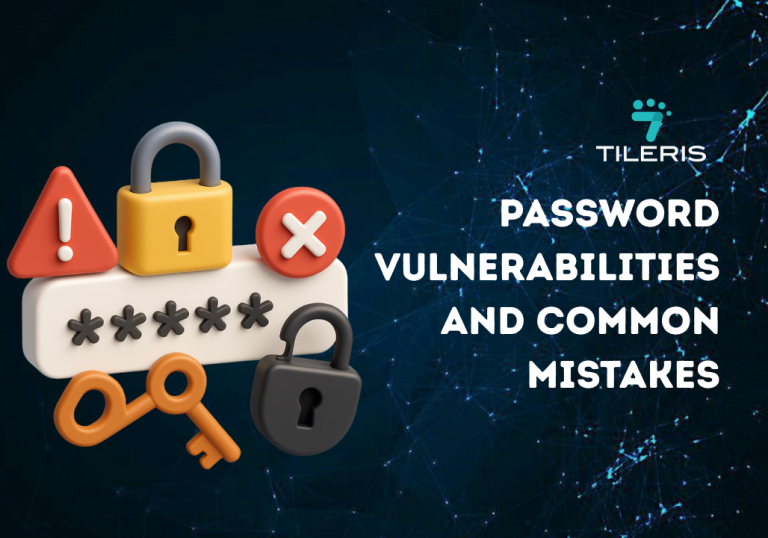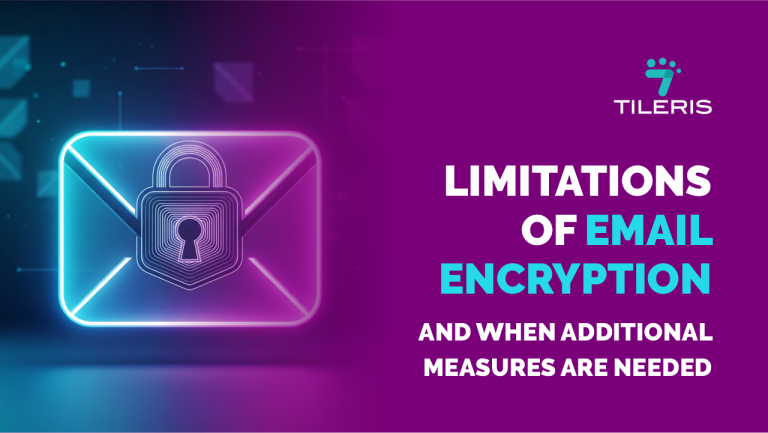Top 10 Most Common Business Email Compromise (BEC) Attack Scenarios
Introduction
Let’s take our imaginations to a scene where a worker receives an urgent email seemingly from his CEO requesting an immediate wire transfer to a new vendor, or a key supplier sending an email notifying the company of a change in their bank account details for an upcoming payment. Unfortunately, these scenarios are not just hypothetical threats; they represent a fast-growing cybercrime known as Business Email Compromise (BEC) attack. This attack exploits the trust in business communications and tricks employees into making fraudulent payments or releasing sensitive information. This type of cyber attack bypasses the traditional security measures, making advanced email security a critical shield for a business’s reputation and financial stability in today’s digital economy.
In this article, we will educate ourselves by reviewing the top 10 most common Business email compromise attack scenarios.
Top 10 BEC Attack Scenarios.
There are many ways cybercriminals go about Business Email compromise attacks; here are the ten most popular ways BEC attacks are performed.
- CEO Fraud: In this type of attack, cybercriminals impersonate a company’s CEO or very high-ranking executive. This is often done through email spoofing, where the sender’s name appears to be the CEO’s, or by even creating a very similar-looking email address, for example, instead of ceo@yourcompany.com, you’ll see an email like ceo@yourc0mpany.com. Sometimes, the attacker might even gain access to the CEO’s email to send these fraudulent messages.
- Target: the target of these attacks is usually employees with authority to access the company’s financial records or perform special tasks.
- Objectives: The primary objective of this type of attack is almost always financial gain. Common requests include: urgent wire transfer, payroll diversions, sensitive data theft, and gift card scams.
How does this work?
- Scenario: An attacker spoofs or compromises the email account of a high-ranking executive (e.g., CEO, CFO) and sends an urgent email to an employee in the finance department. The email typically requests an immediate wire transfer for a supposedly confidential or time-sensitive matter, such as a major acquisition, a legal settlement, or a critical vendor payment. The attacker often creates a sense of urgency and warns against discussing the matter.
- Example: “John, I need you to initiate a wire transfer of $250,000 to the attached account immediately for the acquisition. This is highly sensitive; do not discuss it with anyone else. I’m in a meeting now, so email confirmation is fine. Best, [CEO’s Name].”
John, seeing this email, will quickly spring into action as he sees the CEO’s email address and quickly arranges for the money to be sent. The urgency the scammer put up in the message and the fact that it is from the CEO might pressure John to rush the verification process, which might make him miss the red flags, as they are very subtle.
- Invoice Scamming: This is also known as invoice fraud, it is a type of BEC fraud where cyber criminals trick business owners into sending funds to fraudulent accounts by posing as legitimate vendors or suppliers.
How does it work?
This is going to be broken down into five stages.
- Impersonation: The scammer pretends to be a genuine supplier or vendor with whom you have your business deals with regularly. They might even use a spoofed email that looks identical to the vendor’s real email, or gain access to the legitimate supplier’s email account through a prior hack.
- Deceptive communication: Then you receive an email that appears to be a legitimate invoice or an update from your supplier. This invoice states that their bank account details have changed and requests all future payments to be made to a new account.
- Sense of urgency: Fraudsters often create a sense of urgency, pressuring people into making payments quickly without thorough verification. These changes are sometimes subtle and embedded within existing threads, which makes the harder to spot.
- False Payment: The new bank account details provided in the fraudulent invoice are the scammer’s account details.
- The loss: Unfortunately, these attacks are always figured out after damages have been done and are always discovered when the legitimate suppliers ask why their invoice has not been paid. Sometimes the money is not recoverable.
- Vendor Email compromise: This BEC attack specifically targets the trusted relationship between a vendor and a business. Unlike other BEC attacks, VEC often begins with the cybercriminal gaining unauthorized access to the vendor’s legitimate email. This access is usually gained through phishing attacks targeting the vendor’s weak email security.
How is it done?
This is going to be broken down into 3 steps:
- Intelligence gathering: once these scammers get into the vendor’s email, the attacker doesn’t immediately start spamming emails, instead, they patiently monitor communications between vendor and client, gathering intelligence like:
- Billing cycles and payment terms
- How legitimate invoices are structured
- Details of ongoing projects, purchase orders, and payment amounts.
- Specific contacts who are responsible for payments on both sides.
This process can take weeks or even months.
- Manipulating communications: Now armed with insider knowledge, the attackers use existing threads or send new emails to clients. These emails are highly convincing. They typically contain:
- Request for a change in payment details
- Fraudulent payment invoices
- Interceptions of ongoing business discussions
- The Victim: The client’s account department, receiving an email from a legitimate familiar vendor email address, and often seeing requests that seem to fit into an ongoing business transaction, processes the payment to the updated fraudulent account.
- Attorney impersonation: The scammer pretends to be a lawyer or a legal representative, often pressuring junior employees into immediate actions regarding a confidential legal matter, such as a huge payment.
This is going to be divided into scenarios and examples
- Scenario: An attacker poses as a lawyer and contacts an employee, often the one in a position to authorize payments, with a request for a quick and confidential wire transfer. The pretense is usually a time-sensitive legal settlement, a confidential acquisition, or a regulatory compliance issue that requires immediate payment to avoid penalties.
- Example: “Mr Jeremiah, I request an immediate transfer of $50,000 to the provided details to settle a critical legal dispute. The matter is extremely confidential and time sensitive. Your prompt action is essential to avoid severe penalties. Call me only if necessary. Regards (Legit attorney’s name and his firm).”
If we observe the email was sent with a sense of urgency and also penalty to pressure the employee into wiring the funds to the scammers account and the sentence call me only when necessary was use to make it seem like the person is a busy attorney, pressuring the employee not to make the call and be inquisitive about the details of the dispute. Also, the use of the word confidential makes the mail look like the issue was from a higher authority, and the mail was authorized by a board member or the CEO.
- Data Theft: Attackers target HR or finance departments to steal sensitive data about employees or clients. This data can now be sold on the dark web or used for further attacks.
- Scenario: Attackers target HR or payroll departments, impersonating a high-ranking executive or an employee requesting sensitive information. The goal is to obtain W-2 forms (in the US), employee lists with Personally Identifiable Information (PII), or other confidential data that can be used for tax fraud, identity theft, or further targeted attacks.
- Example: “Hi Mr Daniel, can you please compile a list of all employees’ W-2 forms from last year and send them to me immediately? I need them for an urgent internal audit by the end of the day. Regards, Real CEO’s name.”
Once again, we can see how the sense of urgency is always used by these scammers to try and pressure employees into sending information. Coupled with the fact that the email looks legit and might even be sent from the CEO’s mail if it had been compromised, makes it harder for HR to spot without taking their time.
- Account Compromise: An employee’s email account is hacked and used to send fraudulent requests to colleagues, vendors, or customers.
- Scenario: An attacker successfully gains access to a legitimate employee’s email account through a phishing email or weak passwords. They then use this compromised account to send fraudulent emails to colleagues, vendors, or customers of the company. These emails can request payments, sensitive data, or be direct recipients of malicious links that might be able to access a client’s or a vendor’s data, and even bank codes.
- Example: (Sent from a legitimate internal email address) “Hey Natasha, I’m locked out of our system and need you to approve this invoice payment for Comashal by the end of the day. The bank details have changed slightly, please see the attached for the new account info. Thanks, Daniel [Compromised Employee’s Name].” Then the scammer goes ahead to send a fake invoice containing the compromised account info he recently talked about.
In this case, the scammer just played around with the trust of the second employee because the employee has seen the email and knows it is correct, and also knows that Daniel is her colleague at the office.
- Real Estate Wire Fraud: Real estate wire fraud is a form of Business Email Compromise (BEC) that preys on the often-stressful and high-stakes environment of property transactions. The core of real estate wire fraud involves cybercriminals intercepting legitimate communication channels and impersonating trusted parties to trick victims into wiring large sums of money to fraudulent accounts.
- Scenario: Attackers, impersonating real estate agents, title companies, or lawyers, send fraudulent emails to home buyers or sellers with altered wire transfer instructions for closing costs, down payments, or proceeds from a sale. The timing is often critical, as the victim is expecting these instructions.
- Example: “Dear Client, Please note a last-minute change to the wire instructions for your closing funds. Use the attached new wire details for the payment due tomorrow. Apologies for the late notice; there was a banking system update. Sincerely, [Title Company/Agent Name].” Then the attacker proceeds to send his own payment details, tricking the client into paying the money into his account.
This particular type of is actually very scary because the attacker doesn’t necessarily need to make up a form of urgency, as some of the buyers of these houses are already in desperate need to move in, opening a point of vulnerability.
- Payroll Diversion: Payroll diversion is a type of BEC attack that involves cybercriminals manipulating payroll systems to reroute an employee’s direct deposit paycheck into a fraudulent account controlled by the criminals. This scam preys on the trust and routine of payroll processes.
- Scenario: The attacker targets an HR or payroll department with an email impersonating an employee. The email requests a change to the employee’s direct deposit banking information, intending to divert future paychecks to an account controlled by the attacker.
- Example: “Hi [Payroll Dept.], I need to update my direct deposit information for my next paycheck. My new bank account details are attached. Please ensure this is processed before the next pay run. Thanks, [Employee Name].”
Based on the fact that the email was sent by an email that looks like the employee’s email, or it might even be the employee’s email if he had been compromised, and how often HR gets to receive these types of emails, the red flags can be hard to spot. This can cause serious problems for the employee who is being affected, as it can take a long time for a reversal process of his salary.
- Urgent Payment / Overdue Invoice Scam: The “Urgent Payment / Overdue Invoice Scam” is an effective Business Email Compromise (BEC) tactic because it leverages two powerful psychological triggers, which are urgency and the fear of negative consequences. It plays on a company’s desire to maintain a good reputation with vendors and avoid operational disruptions or penalties. This scam often combines elements seen in other BEC attacks, but its primary focus is on demanding immediate payment for a seemingly critical or outstanding invoice
- Scenario: This variant often combines elements of CEO fraud or vendor impersonation but focuses heavily on creating immediate financial pressure. The attacker sends an email, often from a spoofed executive or a seemingly legitimate vendor, claiming an invoice is critically overdue and immediate payment is required to avoid severe penalties, service disruption, or a damaged business relationship. The “invoice” might be for a completely fake service, an inflated amount, or a legitimate one with altered bank details.
- Example: “Subject: IMMEDIATE ACTION REQUIRED – Overdue Payment for [Service/Project Name]” “Dear [Employee Name], Our records show an outstanding balance of $300,000 for the pressure gauges provided by Nikon Ltd. This invoice is now severely overdue, and we’re facing immediate service suspension if payment isn’t processed by the end of the day. Please initiate the wire transfer to the attached new account details (our bank recently changed) and confirm once done. This is critical. Regards, [Impersonated Executive/Vendor].”
The urgency and threat of negative consequences (service disruption, penalties) push victims to act without proper verification. It leverages the desire to maintain good vendor relationships or avoid internal reprimands.
- Fake Invoice or Payment Request from a Trusted Partner. This is a very common type of BEC attack that relies on the victim’s existing trust in established business relationships. Attackers leverage the routine nature of invoicing and payment processes to trick organizations into sending money to fraudulent accounts. The key here is the impersonation of an existing and trusted partner or vendor.
- Scenario: cybercriminal impersonates a trusted vendor, sending a fake invoice with altered bank details to the victim company’s accounts payable department, to trick them into paying a legitimate-looking invoice to the attacker’s account.
- Example:
- Legitimate Vendor: “NetConnect Solutions” provides internet services to “GlobalCorp.”
- Attacker Action: Attackers spoof NetConnect Solutions’ email.
- Fake Invoice: The attacker sends an email to GlobalCorp’s accounts payable, attaching a fake invoice for “Monthly Internet Service” (NGN 1,500,000), due in 14 days. The invoice appears identical to NetConnect’s usual invoice but contains the attacker’s bank account details.
Check out the FBI’s Safety precautions against BEC here.
How to deal with BEC attacks
- Strengthen email authentication: Implement email authentication protocols.
- Educate employees: Train them to spot phishing attempts.
- Verify transactions: Establish rigorous verification procedures for financial transactions.
- Enforce strong passwords: Use strong passwords and change them regularly.
- Use 2FA: Implement two-factor authentication (2FA).
- Keep software updated: Regularly update all software.
- Monitor email activity: Keep a close eye on email activity for anything suspicious.
- Develop a response plan: Have a detailed plan in place for how to respond to a BEC attack.
Conclusion.
These ten scenarios illustrate the diverse and sophisticated nature of Business Email Compromise (BEC) attacks. By understanding these common tactics, businesses can protect themselves against these attacks.
Feeling a bit swamped trying to keep your business’s emails safe from all the online nasties? It’s totally understandable! That’s precisely why Tileris is here to be your digital guardian angel. We take all these smart security ideas we’ve talked about—and so many more—and weave them into a rock-solid shield for your business. Think of us as the friendly experts who handle the heavy lifting of cybersecurity, making sure your digital world stays strong and resilient, so you can focus on what you do best. Ready to breathe easier about your online security? Let’s chat! You can find us over at http://tileris.com.







